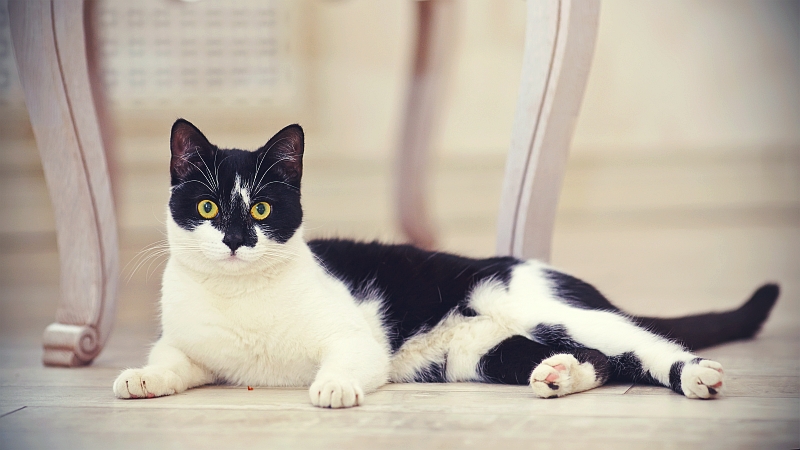Animal body language, especially that of a cat can tell us a lot about what they are thinking, how they are feeling, or what they are about to do. So it is important to pay attention to our pets in order to get to know them. Tail flicking is one such behavior that is most noticeable.
There are a few reasons why a cat might flick its tail: it might be acting playful, showing signs of agitation and stress, showing aggression, or even boredom.
When a Cat Is Playful
There are several ways that a cat will indicate a playful mood, but one of the subtler ones is the flicking of the tail. When in a playful mood, the flicking of the tail is fluid, and does not have as much snap to it. Cats either flick their entire tail in this manner or just the tip as it is bent in an inverted L shape. Do pay attention to the way the tail flicks, because cats can be moody and a playful cat can quickly turn into one that is miffed if she does not like the way things are progressing.
When a Cat Is Agitated
Cats also flick their tail when they are agitated; however, the flicking is somewhat different than the playful version. Unlike a playful cat which flicks her tail in a continuous fashion, a cat that is agitated will flick her tail sporadically, and in short bursts. This is generally a good sign that you should leave her alone for a while. Some suggest that this type of flicking is not necessarily a sign of agitation, but rather overstimulation, and that is why it is advised to leave your cat be if she is in such a mood. To make sure that the tail flicking is in fact a sign of agitation, you can also look for other signs that accompany the flicking, such as dilated pupils, and tense body posture.
When a Cat Is Aggressive
Brisk flicking of the tail can be a sign of aggression, and that the cat is about to be offensive. Unlike the agitated flick, which is generally just the tip of the tail, an offensive flicking starts at the base of the tail and puts the entire tail in motion. In such situations the tail is usually held low (as opposed to sticking up), and could have a more rigid form and puffed up. This signal should be taken as a clear warning to leave your cat alone, and go about your business without disturbing her, as the aggressive mood may result in her scratching or biting if she gets more aggravated by your unwanted presence.
When a Cat Is Idle
A bored cat, while sitting idly, will flick its tail, in soft movements, and indicates a restful cat as she is observing the world around her. This type of flicking, can also happen when the cat is sleeping, leading some to believe that it is a reaction to something that is happening in a dream. This type of flicking can happen when the cat is standing, seated, lying down, or (as just mentioned) sleeping.
By paying attention to this simple body language, you too can figure out your cat’s mood, and react accordingly.

